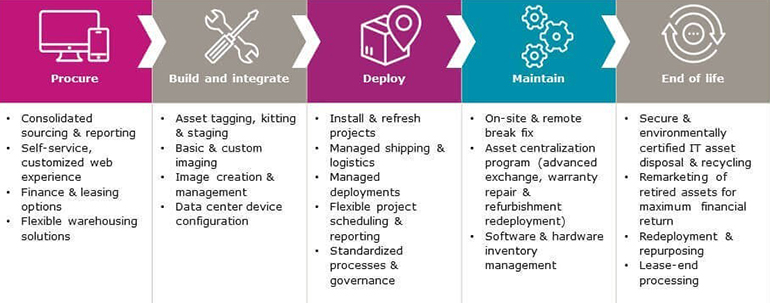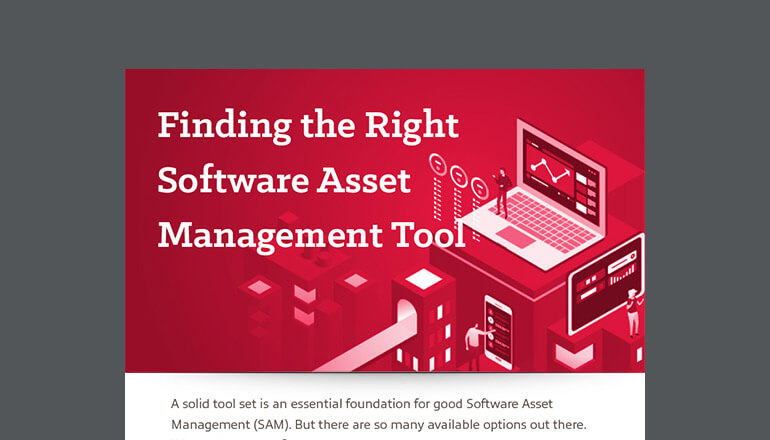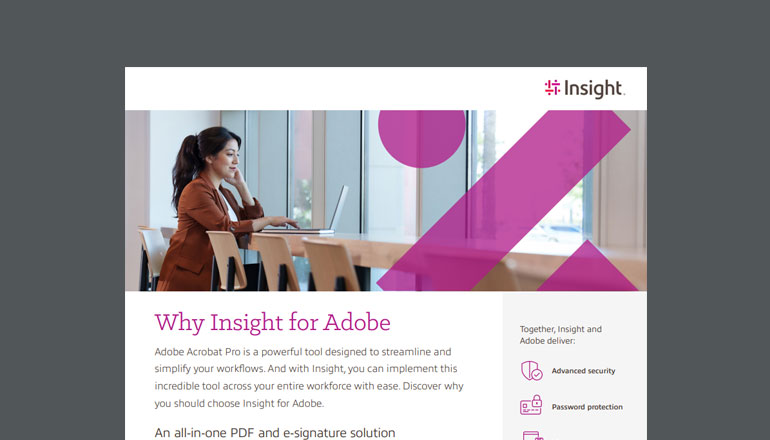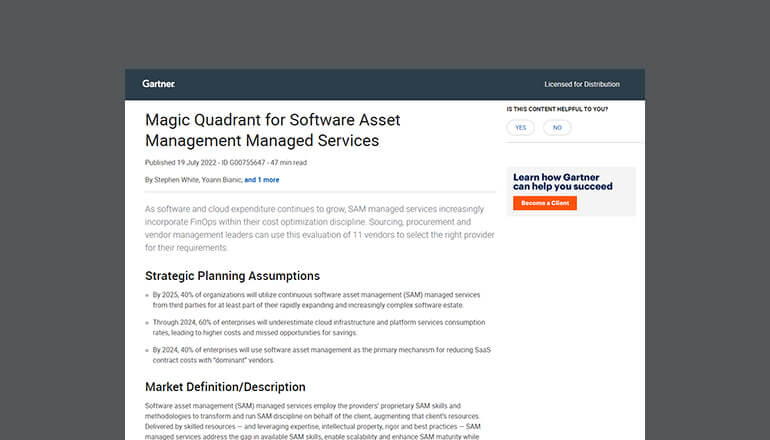Article
Successful IT Asset Management:
So Much More Than Tools
IT asset management, or ITAM, has become a catchall for everything you need to keep your IT supply chain in tip-top shape. ITAM tools are critical — but the real work begins long before you even think about an investment.
By Claudia Hrynyshyn / 14 Jan 2020 / Topics: Software

Imagine spending upward of $300,000 on an ITAM tool. In theory, every moving part of your IT asset lifecycle — purchases, tracking and management should be taken care of.
Big investment, big payoff, right? Not so fast.
While tools are a critical component of IT asset management, they’re only as good as three key business areas that support the tools behind the scenes: people, process and technology. If you aren’t doubling down on this concept before you invest, you’re almost sure to regret it later.
Let’s take a deeper look at each of these areas and how they relate back to ITAM tools to give you a more foolproof IT asset management strategy.
ITAM tools need the right people.
The people across your organisation are investing in two things when it comes to your IT asset management tools intrinsic value (more macro) and day-to-day functionality (more micro). So naturally, there are two hurdles to overcome when it comes to people ensuring the success of your ITAM investment: culture and skill set.
Introducing any new technology or tool to your organisation means change is coming, and people aren’t always ready for the disruption it will bring to their daily work grinds.
To address the culture change, it’s best to rally teams around an IT asset management plan-of-attack that answers why investing in a tool is important — and defines who will do what during each phase of the asset lifecycle. This transparency and enrollment of others will help build trust and confidence in the tool before it even launches.
The cross-functional nature of IT asset management makes this step easier said than done. But companies that spend time laying this type of groundwork are far less likely to make an ITAM tool investment that falls by the wayside.
Culture also requires the proper skill sets to help your investment go the distance. When aligning people to certain aspects of your tool, you must ensure each person has the know-how to interpret data output, provide ongoing insights, troubleshoot if issues arise and more.
Here are some questions to ask yourself:
- At baseline, do my people have specialised knowledge in the specific area of our ITAM strategy that they will be leading? For example, is an IT procurement teammate interpreting data within the procurement process?
- Do my people have the necessary business analytics and general tool troubleshooting skills?
- What measures will be put in place to properly train my people if there are gaps in skills?
- Do we currently have the resources to train people effectively?
ITAM tools need well-defined processes.
Even with the surge of IT asset management data collection methods in recent years, a bird’s eye view reveals the process itself can be wrought with flaws.
After all, different tools are often dedicated to various parts of the business, which means they have disparate methods or goals of collecting data. While one tool may focus on network discovery, another may focus on asset configuration, another may be for software license tracking and yet another for procurement. This renders any data mere fragments of information floating aimlessly within different parts of the business — unless you have the right processes in place to connect the dots.
To establish the right processes, understanding the IT asset lifecycle is a critical first step. The IT asset lifecycle has five major core pillars, or stages:
 Figure 1: The five stages of IT lifecycle are procurement, building & integration, deployment, maintenance and end of life.
Figure 1: The five stages of IT lifecycle are procurement, building & integration, deployment, maintenance and end of life.Each stage requires a process in order to move on to the next stage, and documenting your organisation’s process for every stage is a must.
Let’s use the end of life stage as an example. Software harvesting and license reuse is a process within this stage. Your organisation must be able to define the purpose and benefit of this process, as well as specific activities that must be performed in order for the process to function well, come to completion and restart the cycle.
Once you have an understanding of your process requirements within each stage, you’ll be able to compare those needs with all of the features of your IT asset management tools to see if your bases are covered, or if you will have to supplement via other means.
ITAM tools need to adapt to your tech environment.
At the end of the day, an IT asset management tool is a technology investment . So it’s critical that the technology works with — not against — your existing infrastructure.
Keep in mind that this goes for technology that already exists within the organisation as well as technology that doesn’t.
For example, let’s say Company A has been using manual processes for collecting IT procurement data for the last decade or so. Every IT purchase made exists in an Excel spreadsheet. Then, a new IT asset management tool is introduced. What happens to all of the past data? A data migration project is on the horizon, but what’s the most efficient way of moving everything over?
Now, let’s say Company B already has an e-procurement platform that tracks IT purchases. It works well, but the company wants to introduce a more holistic tool. Is the existing system designed to talk to the new one? If not, Company B and Company A look the same, even though one has existing software in its environment and one doesn’t.
Exploring software asset management tools? Use this infographic as a quick-glance guide when sourcing solutions.
The bottom line is that understanding how your current systems will (or won’t) interact with your new ITAM tools helps you think through what needs to be done to make the transition seamless — before you make an investment.
Remember the big picture.
It’s easy to dive head-first into a shiny new tool and deal with potential problems after the rollout. But all organisations have one thing in common: Business never sleeps, and if the backend is off just one day, it can throw the front end into chaos.
Organisations that master IT asset management will always take a proactive approach, building a strategy and foundation around their tools so that they deliver impact for the long haul.





